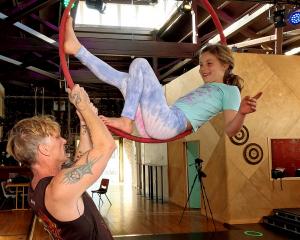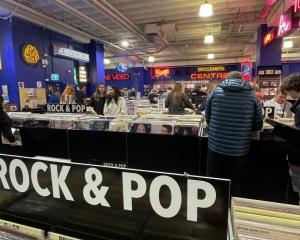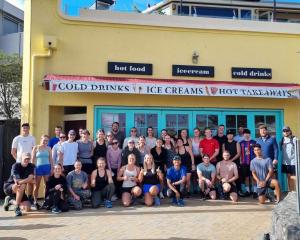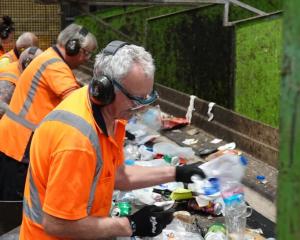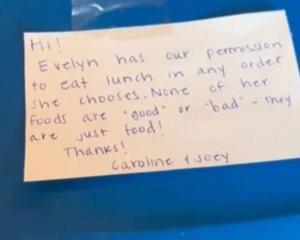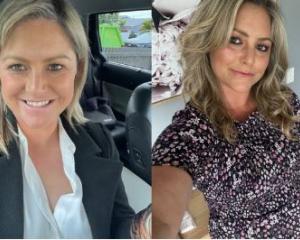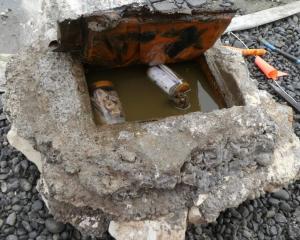"In 40 minutes, I'll get a nosebleed that won't stop and I'll need a blood transfusion to save my life," says a basketball player in a brief 15-second clip that interrupted 1 News last night.
Ten minutes later, it's followed by another clip of a dad putting his son to bed: "In 30 minutes my son's cold will turn into something much worse and we'll find out he needs ongoing plasma transfusions to fight a rare genetic disorder."
As the news programming continues, a third, fourth and fifth ad follow, each telling a harrowing story true story that led to Kiwis needing urgent blood transfusions.
These disparate threads are tied together in a tense final ad that plays out the predictions and urges New Zealanders to donate blood.
The hard-hitting creative approach employed in the latest campaign is derived from the urgency to increase the donor registry in New Zealand by 30,000 people.
"This winter we are asking everyone who is eligible to donate to join our registry and start donating blood or plasma," says Asuka Burge, New Zealand Blood Service national marketing and communications manager.
"We need to grow the donor registry from 110,000 to 140,000 donors to ensure we can continue to meet demand. And to do that we need people to act now."
While the stories make for difficult viewing, Burge says that each one is based on real people and real stories.
"They may seem a little confronting, but they are the reality to many of the 30,000 people every year in New Zealand who will require blood and plasma to help save their life."
The data from NZ Blood Service on blood transfusions offers a sombre reminder of how urgent the need for blood is in New Zealand.
Two babies will need blood or plasma every day, 117 New Zealanders will have a life-threatening accident necessitating a transfusion every week, six children under 15 will need a transfusion every day, and 152 cancer patients will need lifesaving blood or plasma as part of their treatment every week.
To keep up with this demand, the NZ Blood Service needs to collect more than 4000 blood and plasma donations every week - a challenge made difficult by the fact that only 4 per cent of eligible Kiwis currently donate blood.
"We are asking people not to wait to save a life, because unseen emergencies are happening every day," Burge says.
"If someone was to ask, 'would you be willing to help someone on what might be the worst day of their life', most of us would say yes. That's what blood donors do. Donating blood is the greatest gift a person can give, it's like a future promise to save someone's life."
Creativity to overcome apathy
The real challenge that underpins the blood drive is turning apathy into action. It's about convincing at least some of the 96 per cent of eligible Kiwis that donate regularly that they need to do their part.
An interesting insight that emerged in the development of this campaign was the fact that New Zealanders are willing to donate blood whenever they see an immediate emergency at hand.
"During times like Whakaari White Island or the Christchurch Mosque attacks, we're always amazed by the offers to donate blood or plasma," Burge says.
"But the reality is, we need people to commit to ongoing, regular donations to meet demands."
It, therefore, became imperative for NZ Blood Service's creative partner YoungShand to show Kiwis that emergencies happen all the time, even if we don't know about them.
"Through the use of real unseen emergencies, we want to reiterate the importance of donors committing to ongoing, regular donations, not just when a story hits the news," says Anne Boothroyd, the executive creative director at YoungShand.
There are two important strategic elements to getting this message across. The first was ensuring that it was seen and heard by as many people as possible.
This was done by launching the campaign during 1 News, which remains the most well-watched hour of television in the country.
But the creative innovation isn't limited to television ads. The team has also rolled out a creative strategy on the radio side of the media plan by getting Samantha Hayes and Simon Dallow to cross the commercial divide to deliver blood drive segments on Newstalk ZB.
Ensuring that seen and heard is only part of the equation. The harder part is ensuring that viewers and listeners actually remember what they have been served - and this is where the confronting nature of the advertising comes into play.
The point here is to deliver something that moves people and sticks with them long after the ad has concluded.
And on this note, a new wailing in the delivery room might not be something any of us want to see at 6.30pm on a Monday night, but it's also something we won't quickly forget.
• To book an appointment to donate download the app, visit nzblood.co.nz or call 0800 448 325 (0800 GIVE BLOOD).


